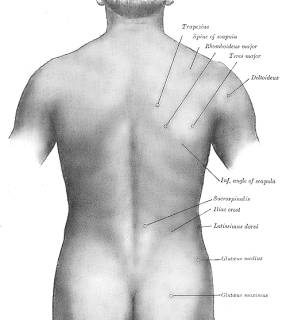 A July 18th New York Times blog post entitled Alternatives for Back Pain Relief surprised me when it proclaimed that a modern and widely used treatment method for low back pain is no longer considered effective, especially for chronic or long-standing low back pain. That treatment is the use of injections into the areas of pain. The injections usually contain the inflammation-decreasing drug cortisone, but can also have ingredients like morphine, ibuprofen and vitamin B12 in the mix. Over the years I have had many patients come to me with low back pain, and from their reports, the effectiveness of the injections never seemed particularly strong. For some patients with new acute low back pain, who experienced more serious signs and symptoms, like radiating pain to the leg or actual weakness, the injections more often seemed to provide some temporary pain relief.
A July 18th New York Times blog post entitled Alternatives for Back Pain Relief surprised me when it proclaimed that a modern and widely used treatment method for low back pain is no longer considered effective, especially for chronic or long-standing low back pain. That treatment is the use of injections into the areas of pain. The injections usually contain the inflammation-decreasing drug cortisone, but can also have ingredients like morphine, ibuprofen and vitamin B12 in the mix. Over the years I have had many patients come to me with low back pain, and from their reports, the effectiveness of the injections never seemed particularly strong. For some patients with new acute low back pain, who experienced more serious signs and symptoms, like radiating pain to the leg or actual weakness, the injections more often seemed to provide some temporary pain relief.However, several new studies have revealed that, when looking back at those patients treated with injections, the injections were not significantly more effective than no treatment at all. And one study indicated that those who did not get injections for a pinched nerve in the lower back fared better down the road than the patients who received an injection course. In the commentary published in a recent issue of JAMA:
“Based on the available data, the JAMA authors conclude, doctors “should not” recommend injection therapy to their patients with chronic low back pain.”
That may be a hard pill for some doctors to swallow, as there has been a steady increase in the use of injections for low back pain, mainly because it is relatively inexpensive, can be done as an outpatient in the office, has fewer risks compared to surgery, and makes the docs some bling. The possible one positive use of injections is that is does often provide some temporary relief of low back pain symptoms.
The New York Times post then went on to reference a recent systematic review of yoga for low back pain that we reported on here early this year. This study looked back at all of the best designed studies on the subject and concluded that there was “strong evidence of short term effectiveness of yoga for low back pain and moderate evidence of long-term effectiveness of yoga.”
But although the New York Times post mentions the clear benefit of yoga for short-term back pain, it does not emphasize the second claim that the study discovered: moderate evidence for yoga's help over the long term. I took another look at the study itself, and discovered an important caveat: the authors would only recommend Viniyoga style practice for long-term benefits, as the other yoga methods studied did not demonstrate the same benefits. As they state:
"The American Pain Society's guidelines recommend that clinicians consider offering yoga to patients with chronic LBP (lower back pain). However, this recommendation is limited to Viniyoga-style yoga as the net benefits for other yoga styles could not be estimated."
Now, I love Viniyoga and integrate its methods into my own practice and teachings, along with the wisdom of the Iyengar method and some other modern yoga styles I’ve learned over the years as well. But I suspect that some of the alignment-strong styles, like the Iyengar method, will prove to be helpful in the long run as well, but we will need better studies to bear that out. That said, for those who are not familiar with Viniyoga (a term coined by American yoga teacher Gary Kraftsow for the yoga he learned from T. Krishnamacharya and TKV Desikachar) I would recommend to you two books to learn more:
- The Heart of Yoga by TKV Desikachar
- Yoga for Wellness by Gary Kraftsow
And don’t forget, my live webinar on Yoga for Healthy Digestion starts tomorrow on Yoga U online! Click here to learn more about it and sign up to join me Tuesday and Thursday from 5:30-6:30 EST.

